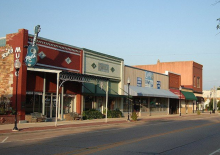Wireless And Wired; US Internet Knows Both - Community Broadband Bits 301

Deploying, maintaining, and operating a wireless network is easy, right? You just put up your equipment, sign up subscribers, and start raking in the dough, right? Not even close, says Travis Carter, one of the co-founders of US Internet and our guest for episode 301 of the Community Broadband Bits podcast. He should know -- he's deployed both wireless and fiber networks in Minneapolis.
In this episode, we get an update on US Internet’s progress on its fiber deployment. Travis also compares what it’s like to own, maintain, and operate each type of network. There are pros and cons of each and each is better suited for different environments and situations.
Travis and Christopher also talk about some of the marketing approaches that US Internet use after being in business for several years and determining what works in the Minneapolis market. He describes how a local company can compete against the big national ISPs by giving subscribers a good product, maintaining good customer service, and keeping an eye on long-term goals.
Learn more about US Internet in episode 194 of the Community Broadband Bits podcast.
This show is 34 minutes long and can be played on this page or via Apple Podcasts or the tool of your choice using this feed.
Transcript below.
We want your feedback and suggestions for the show-please e-mail us or leave a comment below.
Listen to other episodes here or view all episodes in our index. See other podcasts from the Institute for Local Self-Reliance here.
Thanks to Arne Huseby for the music. The song is Warm Duck Shuffle and is licensed under a Creative Commons Attribution (3.0) license.


